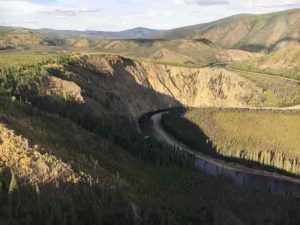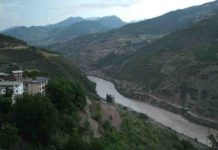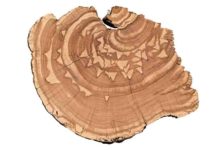
Scientists have long debated the idea that global climate changes have forced river erosion rates to increase over the past five million years. New field data gleaned from a multi-institution, collaborative study of North America’s rugged Yukon River basin, near storied Klondike goldfields, reveal profound increases in river erosion during abrupt global intensification of climate fluctuations about 2.6 and one million years ago.
“These results provide the first definitive support that increases in sediment deposited to oceans from river erosion coincide with dramatic changes in glacial cycles,” says Utah State University geoscientist Tammy Rittenour. “Our ability to date former river deposits was the game-changing factor in allowing us to pursue this hypothesis.”
Rittenour and colleagues from the U.S. Geological Survey, the University of Vermont and Purdue University published findings in the July 20, 2020, issue of Nature Geoscience.
“Oxygen isotope values in marine sediment show worldwide fluctuations between cold and warm climates that abruptly intensified during the early Pleistocene period,” says Rittenour, professor in USU’s Department of Geosciences. “Rates of river sediment accumulation also jumped during this time.”
Since rivers do the work of erosion and sediment transport over most of the Earth’s surface, scientists have long suggested patterns of global precipitation mimic climate fluctuations.
“If that’s the case, enhanced river discharge resulting from intensified global precipitation would increase rates of river erosion,” she says.
To test this idea, the team took advantage of the landscape history preserved in the study site’s prominent river terraces — ancient river floodplains — perched up to hundreds of meters above the modern Fortymile River, a Yukon River tributary that flows from northwestern Canada to Alaska.
“This ‘Rosetta-stone’ location, with exposed terraces, provided a long-sought window from which to obtain data,” says Rittenour, a Geological Society of America Fellow. “We geochronologists often repeat the adage, ‘No Dates, No Rates,’ meaning we can’t calculate rates of erosion without age control. Using relatively new dating techniques, we were able, for the first time, to establish ages for river deposits that span these key time periods of global climate change.”
Co-authors Lee Corbett and Paul Bierman of UVM and Marc Caffee of Purdue provided age control on the site’s older terraces, using cosmogenic nuclide burial dating methods that use differing decay rates of unique radiogenic isotopes of beryllium and aluminum produced by sediment exposure to cosmic radiation.
Rittenour, director of USU’s Luminescence Laboratory, used optically stimulated luminescence dating of younger river sediments.
“OSL dating provides an age estimate of the last time the sediment was exposed to light,” she says.
Corroborating the team’s new results, Bering Sea sediment records show concurrent increases in accumulation of sediment eroded from the Fortymile River.
“It’s exciting to apply new tools to test foundational ideas that have been only previously speculated,” Rittenour says. “These results represent an important step toward understanding the influence of climate in shaping landscapes inhabited by people, and provide clues regarding future landscape response to human activity.”
Reference:
Adrian M. Bender, Richard O. Lease, Lee B. Corbett, Paul R. Bierman, Marc W. Caffee, Tammy M. Rittenour. Late Cenozoic climate change paces landscape adjustments to Yukon River capture. Nature Geoscience, 2020; DOI: 10.1038/s41561-020-0611-4
Note: The above post is reprinted from materials provided by Utah State University. Original written by Mary-Ann Muffoletto.










